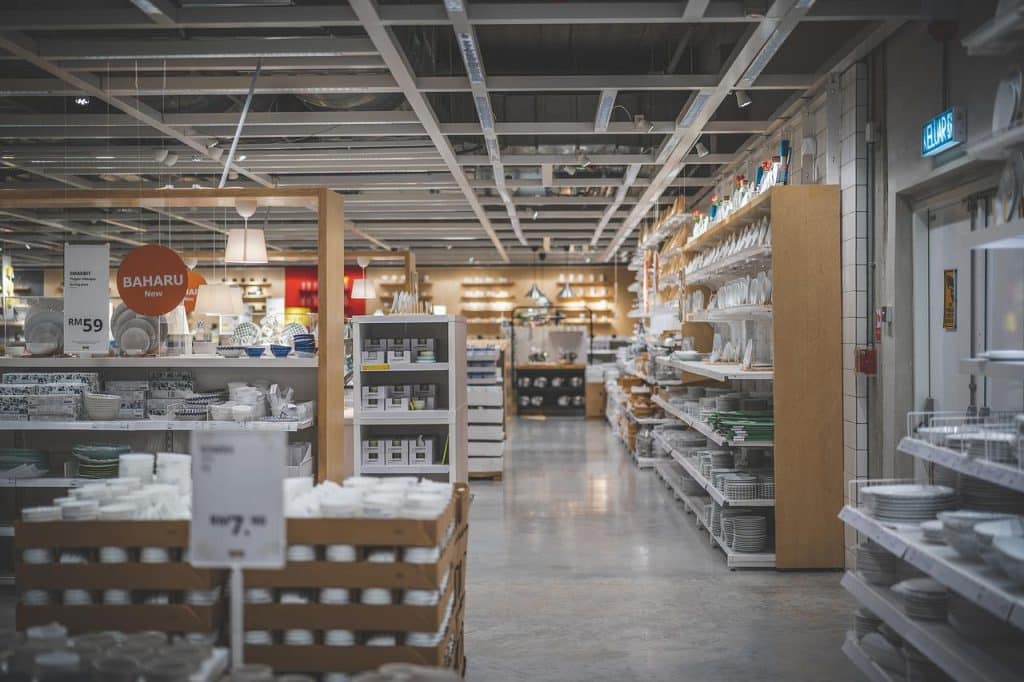
BY NICOLAS MENTOR MY JOB GLASSES & MERCHANDISING MANAGER
I have been a Merchandising Manager for many years but I only I realised how my profession, and merchandising in general, is unknown to young people recently, when I became a mentor on My Job Glasses. This came as a surprise since merchandising is a fundamental pillar of the commercial brand strategy.
This article has two goals : defining what merchandising is and explaining the different tasks of a Merchandising Manager.
Needless to say, it will reflect my own vision of this field and this profession, mainly in the high-tech sector. Other professionals would surely give you other tips and share with you other experiences.
WHAT IS MERCHANDISING ?
Here’s a simple and realistic definition of merchandising by the Institute of Commerce (IDC): “Merchandising brings together a set of methods and techniques for setting up and presenting products in stores, with the aim of increasing sales and/or profitability regarding these products and stores”.
Charles H. Kepner, a famous American entrepreneur and organizational management consultant, established the 5 Bs rule, a principle that is still known to everybody in the business nowadays : the right product, at the right time, in the right place, in the right quantity for the right customer.
Merchandising therefore exists to promote the right products in the appropriate points of sale while taking into account multiple criteria, with the ultimate objective of increasing sales and boosting the profitability of those points of sale.
To fully understanding merchandising, we must take things a bit further since there are several types of merchandising as seen below:
1. MERCHANDISE ASSORTMENT
This first type of merchandising is mostly used in agri-food businesses although not exclusively. The merchandiser will create planograms to place products on specific shelves (picture the cereal or detergents aisles for instance). The placement of the products will be based mainly on business criteria (price, sales, stock, etc.) but also take into consideration other fundamentals (eye level, packaging, location of the store, etc.). It involves little customer experience.
2. VISUAL MERCHANDISING
Mostly used in fashion and luxury businesses to glamorise the product. Sometimes it may be taken quite far, for instance, some brand may use a 50 sqm room to display a 3,000€ bag and offer the customer a memorable visual experience (through colors, shapes, materials, etc.). In some cases, retailers may add olfactory elements to the display.
3. “MY MERCHANDISING” (OR THE ONE I WORK ON)
This merchandising is often used in specialised retailers within the leisure, high-tech (such as Fnac-Darty, where I currently work) or sports businesses. It combines both assortment and visual elements to create a consistent customer experience based on rational criteria.
Merchandising applies to both brick-and-mortar and online stores. Although the objective is the same in both cases, the tools and activation levers are quite different online and offline. It’s a fascinating subject, but I won’t go into it not here because e-merchandising is not my specialty. An equally interesting variation of merchandising is trade marketing, combining marketing and merchandising and designed directly by manufacturers.
WHAT IS THE ROLE OF A MERCHANDISING MANAGER?
The Merchandising Manager defines the rules for product displaying within the brand’s stores and oversees the compliance with these rules instore. In order to do this, he provides stores with all the necessary tools such as merchandising books and planograms. He works on both macro (the display of product families instore) and micro (details by product family) levels.
Schematically, the projects are managed as follows:
- Writing a brief summarising the issue
- Thinking of a solution to answer this problem
- Testing the solution to check if it works (does the product(s) sell best?), quantifying the cost (How much will the setup cost? Does it fit into the budget?), producing the piece(s) of merchandising (furniture, tombstone, POS, etc.), setting up the display and monitoring the results
Here is an example to give you an idea of what a merchandising project looks like:
- Problem: accessories (mice, keyboards, headsets) used by PC gamers must be presented in a more qualitative way
- Merchandising Manager Solution: create a universe that speaks to its customers by using brand codes (colors, logos) and allowing players to experiment with products (touch a mouse, test a helmet, etc.)
- Test: designing bright logos and presentation displays, asking an agency to estimate the cost, developing the solutions, producing and installing the display in stores.
The Merchandising Manager monitors budgets and planning, goes to stores, organises internal and external meetings, works with agencies, manufacturers and brands. He can also manage one or more people depending on the team.
HOW TO BECOME A MERCHANDISING MANAGER AND HOW TO MOVE UP THE LADDER?
To become a Merchandising Manager, you don’t need any specific technical skills (you will learn them once employed). You don’t necessarily need long studies or a merchandising diploma either, even if it’s still a big plus for your employability.
Some Merchandisers begin their careers instore by executing Merchandising Manager rules, while others start in a marketing team… There is no typical profile or path. You must know that there are only a handful of diplomas and very little in universities and schools teaching merchandising.
Here’s an example of a smooth career path in merchandising: intern as a Merchandising Assistant, then become Merchandising Manager and, after that, take a role as a Merchandising Director. It is also possible to branch off into other related sectors such as marketing.
WHAT QUALITIES ARE NEEDED TO WORK IN MERCHANDISING?
As previously said, you don’t need that many technical skills to kickoff your career.
Merchandising professionals often use specific software including the Adobe Suite, but you can become an expert on those once you start working. The same goes to other tools such as PowerPoint and Excel.
Essential qualities (or soft skills) to work in merchandising (some of which are acquired with experience of course):
- Common sense and logic: these will help you succeed at all times!
- A sense of organisation: keeping a schedule, managing several projects at different stages of progress
- Precision: sometimes a small millimeter is enough for a merchandising project not to work
- Team spirit, relational ease and diplomacy: we work with people from different sectors and professions but who must lead to the same objective
WHY SHOULD YOU CHOOSE A CAREER IN MERCHANDISING?
Merchandising is an exciting sector that allows you to create real things that customers will be able to touch, experience… You will be able to see if what you have created works, if it pleases customers and retailers alike and you will get a sense of fulfillment in what you do.
We, merchandisers, are at the heart of the customer experience. We help creating connections between customers and stores and protect the retailers businesses with it.
Want to learn more about the job of Merchandising Manager? Click here to contact Nicolas via My Job Glasses!


